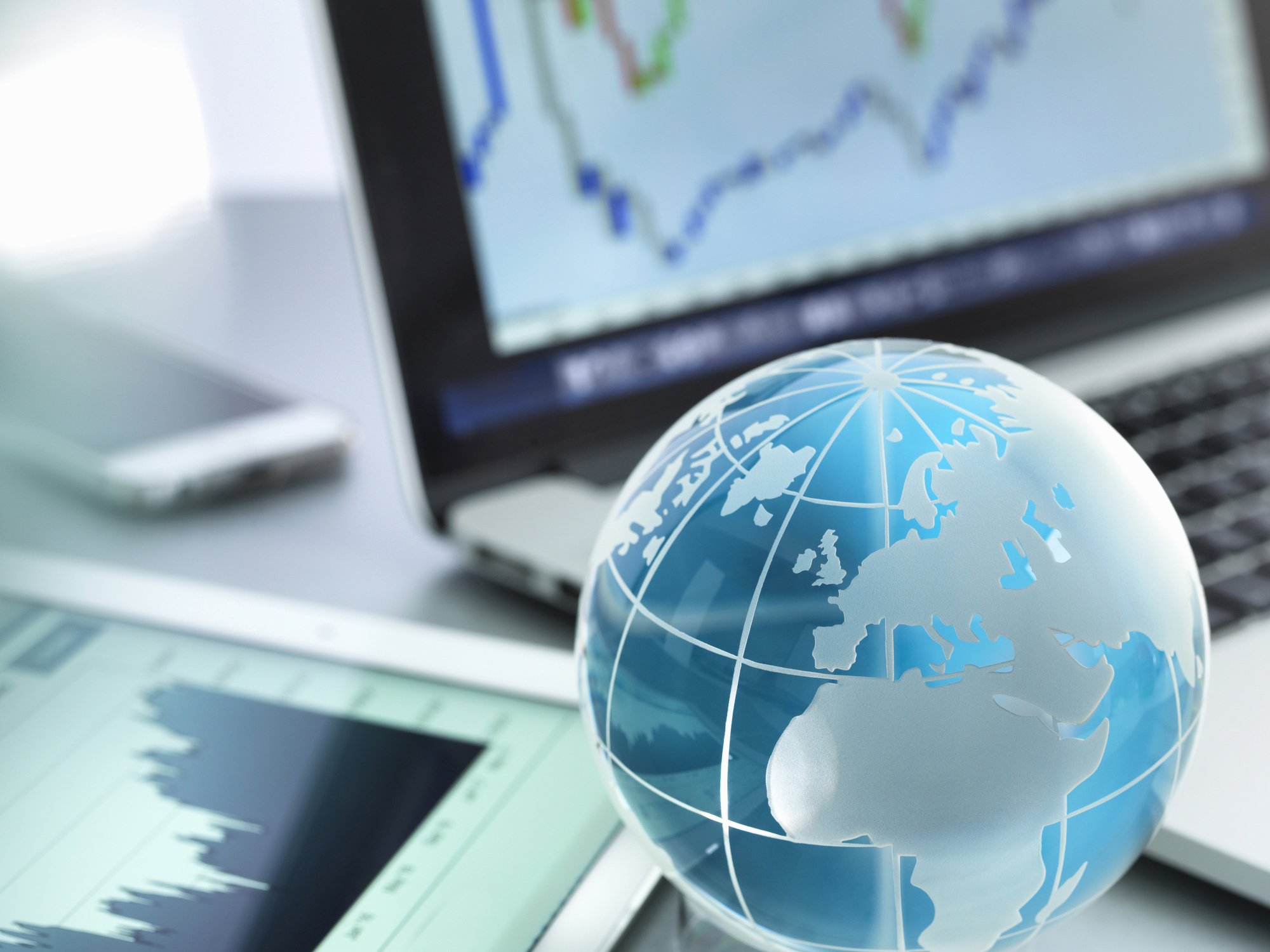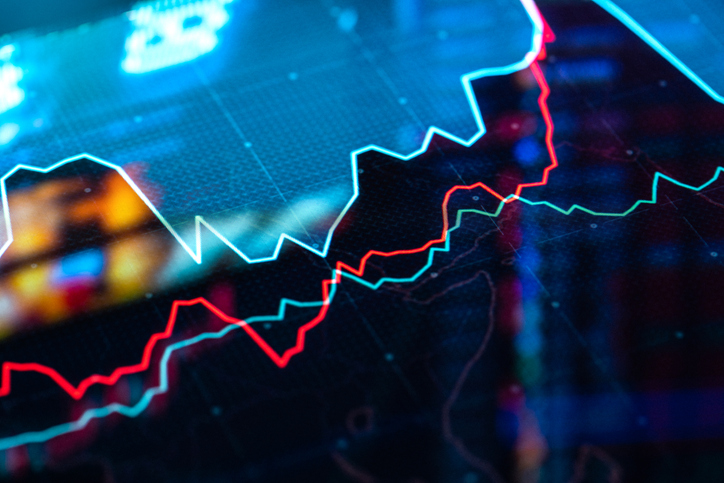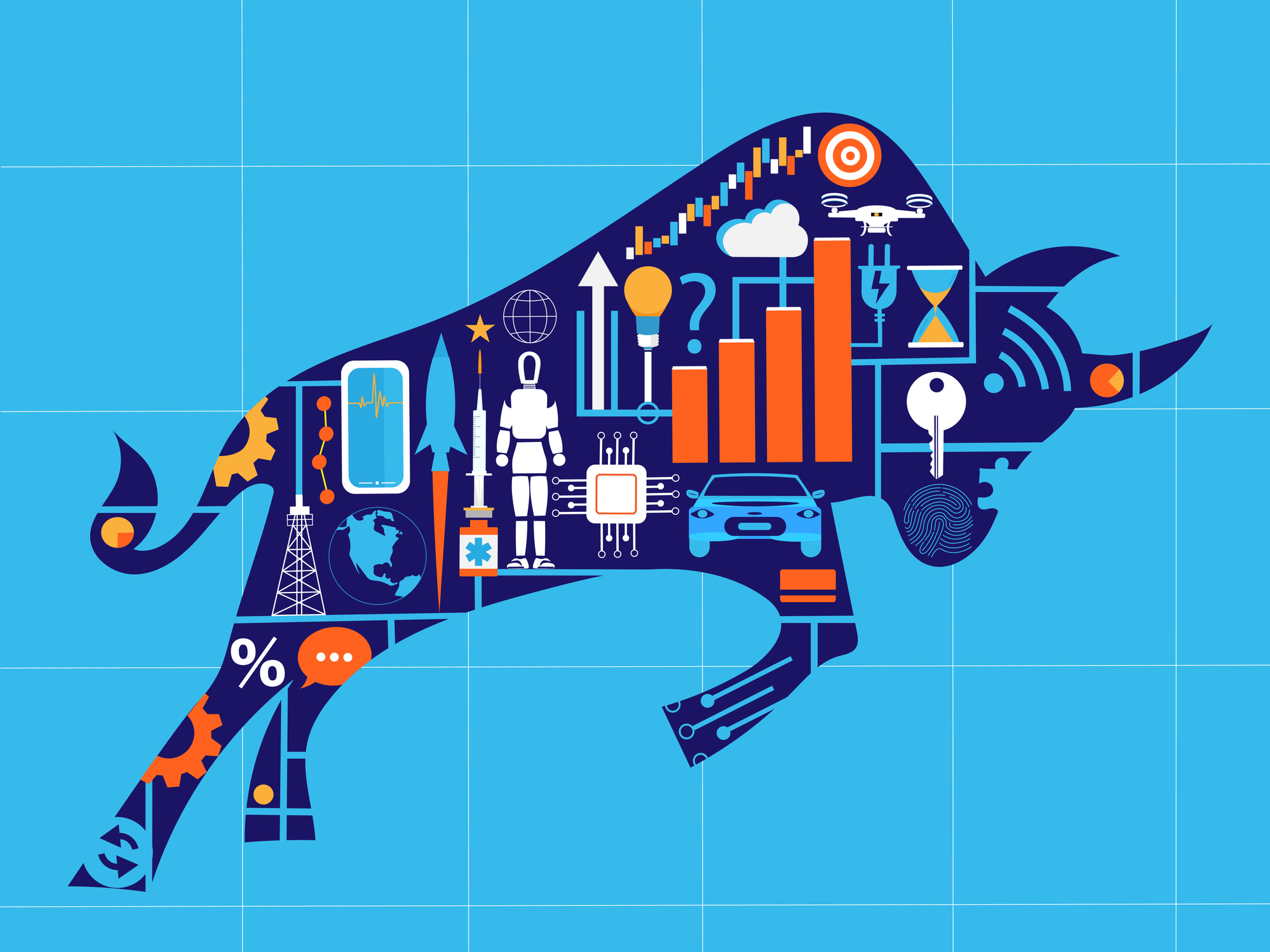Why Investing Abroad Could Pay Off
Countries overseas are stimulating their economies, and their stocks are compelling bargains.

Each day, hundreds of millions of market participants around the world follow the news and events and modify their investment portfolios accordingly.
At some point during the past year, investors began to question the assumption of so-called American exceptionalism and the priced-to-perfection valuations of U.S. stocks, particularly when compared with much cheaper stock market valuations abroad.
Jay Pelosky, founder of TPW Advisory and a veteran market strategist, thinks the first crack formed last year when the unveiling of China’s low-cost artificial intelligence tool DeepSeek AI called into question the sky-high valuations of U.S. mega-capitalization tech stocks.
From just $107.88 $24.99 for Kiplinger Personal Finance
Become a smarter, better informed investor. Subscribe from just $107.88 $24.99, plus get up to 4 Special Issues

Sign up for Kiplinger’s Free Newsletters
Profit and prosper with the best of expert advice on investing, taxes, retirement, personal finance and more - straight to your e-mail.
Profit and prosper with the best of expert advice - straight to your e-mail.
Then came the “rollout of tariffs by the Trump administration — chaotic, at best — which unnerved investors who had looked at the U.S. as a safe haven,” Pelosky says.
The sequence of events triggered an outflow from the dollar (off 10% from its January high, as measured by DXY, the U.S. dollar index), Treasuries and U.S. stocks.
“All of a sudden, you no longer had to be in U.S. tech or, arguably, in the U.S. at all,” says Pelosky. “I believe that we’re in the beginning of a secular leadership change from the U.S. equity market to the rest of the world.”
If so, we’re in the early stages of shifting tectonic plates. From 2010 through 2024, the performance of U.S. stocks crushed that of foreign markets, following a nine-year period (2001–09) when international stocks led.
At the end of the recent 15-year cycle, “expectations were too high in the U.S. and too low in the rest of the world,” says Christian Heck, an international stock fund manager at First Eagle Investments. “The U.S. doesn’t have a monopoly on great businesses.”
So far this year, U.S. and foreign markets have traded places. During the first four months of 2025, foreign stocks, as measured by the MSCI ACWI ex-USA index, gained 9% while the S&P 500 index lost 5%.
But foreign stocks are still more attractively priced than U.S. shares. They trade about one-third cheaper on a price-earnings basis than American stocks and offer a dividend yield that’s more than double the S&P 500’s parsimonious 1.4%.
“Markets with low valuations are generally better fishing grounds, since your rate of return is a function of the cash that businesses produce and the price you pay,” says Richard Cook, manager of the Cook & Bynum fund.
In fact, many investment observers see a contrast between the post-COVID macroeconomic setup in the U.S. and the economic environment in Europe and China today.
The U.S. tapped enormous fiscal and monetary largesse to stimulate the economy during the pandemic, which pumped up economic growth, corporate earnings, and asset prices. But now, saddled with a massive budget deficit and federal debt load, the U.S. has used up its fiscal latitude.
Meanwhile, other parts of the world still have leeway. Largely as a response to tariff and military security threats from the U.S., Germany is breaking with a decades-long policy of fiscal austerity and earmarking trillions of dollars of spending over the next decade on defense, infrastructure and energy, notes Arne Noack, of Deutsche Bank’s DWS Group.
Noack adds that China — which, like Germany, has only a modest central government debt level — also plans to engage in fiscal and monetary stimulus. Thus, while the U.S. grapples with a grim budget picture, fiscal stimulus will be an economic and stock tailwind in other parts of the world.
The case for investing more of your assets in foreign stocks seems solid, but just how much of your stock portfolio should you allocate abroad? No single answer works for everyone, but most Americans probably have too little. Often, that’s because they suffer from “home bias” and have perhaps failed to re-balance portfolios after a long period of U.S. outperformance.
First Eagle’s Heck suggests that a stock portfolio have an international allocation of at least 20% to 30%. Other pros say a useful yardstick could be the portion of foreign stocks in the MSCI ACWI benchmark, which is over 30% these days, though some advise going even higher because the U.S. weighting in that global benchmark is close to a record high.
To help you navigate investing abroad, we’ve identified a number of opportunities in different investment vehicles, including exchange-traded funds, mutual funds and individual foreign stocks.
Several of the diversified foreign funds include shares in emerging markets, and each of the stock picks is an emerging-markets play. Returns and data are as of April 30.
Start with ETFs
One less-noted aspect of the exchange-traded-fund revolution is that it is giving individual investors access to institutional-caliber portfolio strategies. Investment managers that have historically catered to clients such as endowments, high-net-worth families and intermediaries like financial advisers are issuing identical or similar strategies in ETF wrappers.
Boston investment firm GMO, for instance, has run a highly successful global equity strategy for deep-pocketed clients for more than 20 years. But lately, the research-oriented firm has launched ETFs that are available to all investors.
Two such funds are GMO International Quality (QLTI, $25, expense ratio 0.60%) and GMO International Value (GMOI, $27, 0.60%). Both funds launched in late 2024, so they have short track records, but the strategies and managers behind them have long, remarkable results.
GMO International Quality tackles “quality” in its own way. Fund comanager Anthony Hene says GMO looks for businesses with sustainable competitive advantages that can continue to generate superior returns on capital. Because those stocks tend to be less volatile and hold up relatively well in turbulent markets, Hene says he considers the GMO International Quality ETF “a nice, conservative way to gain exposure to international equity markets. Quality is a way of controlling important risks without limiting long-term returns.”
The fund’s top holdings include LVMH Moët Hennessy Louis Vuitton and Taiwan Semiconductor Manufacturing.
At GMO International Value, fund comanager Warren Chiang says his team identifies bargain-priced, high-quality stocks by looking for businesses “with a strong moat around them” that have low debt levels and high, consistent profitability. This helps to “get rid of junk” and weed out value traps (beaten-down stocks in troubled companies that continue to fall in price).
Holdings in the fund have an average price-earnings ratio of just 10, and the fund yields 4.7%. Its largest country exposure is Japan; Nippon Telegraph & Telephone and Honda Motor are its top Japanese positions. And the fund has big tilts toward industrial and health care stocks, including Novartis and Roche.
“Swiss pharma stocks are incredibly cheap versus their cash flows and earnings,” Chiang says.
The quantitative, scientific investment strategies of Dimensional Fund Advisors were once available only to professional clients such as registered investment advisers. That changed in 2021, when DFA began converting some of its existing mutual funds into ETFs.
One of these is Dimensional International Value (DFIV, $40, 0.27%). The ETF has outperformed its benchmark, the MSCI World ex USA Value index, by an average of 1.2 percentage points per year since the fund’s inception more than 25 years ago — a remarkable achievement.
Senior portfolio manager Joel Schneider says the fund’s rules- and data-driven process starts with the cheapest one-third of stocks in 22 developed countries. Next, the fund screens for attributes such as valuation, profitability and size. When implementing buy and sell decisions, the fund applies additional considerations such as price momentum. The result is a portfolio that holds nearly 500 stocks. Over the past five years, International Value has returned 16.9% annualized, which places it in the top 7% of foreign large value funds.
Back in the day, investors who wanted into Capital Group’s American Funds had to buy them through an adviser. Those rules have been relaxed somewhat; the F1 share class is available to individual investors for no load at some brokerage firms. And in 2022, Capital Group began launching actively managed ETFs that are open to individual investors.
The 25 ETFs it now offers aren’t clones of existing American funds, but Andrew Suzman, principal investment officer of Capital Group International Core Equity (CGIC, $27, 0.54%), says that “many share similar DNA with some of our well-known mutual funds.”
With eight comanagers and a focus on long-term growth of capital, International Core Equity is run in Capital Group’s multi-manager style.
“We believe in time in — not timing — the market,” Suzman says. “Staying invested and taking a long-term view during volatility is what matters.”
International Core Equity, which seeks dividend payers and yields 3.2%, is a solid choice as a core foreign fund. Emerging-markets stocks make up 19% of the fund’s assets. Top holdings include Taiwan Semiconductor, French energy giant TotalEnergies, and BAE Systems, a British aerospace and defense contractor.
Mutual funds
Rajiv Jain founded investment management firm GQG Partners in 2016 and now manages several mutual funds that are known for their solid returns and strong downside-risk management.
Two worth considering are GQG Partners International Quality Value (GQJPX, 0.71%) and Goldman Sachs GQG Partners International Opportunities (GSIHX, 1.13%), for which GQG serves as subadviser. Both funds trade for no fee at Schwab and Fidelity; the Goldman Sachs fund is also available for no fee at E*Trade.
Brian Kersmanc comanages both funds, but the two are distinctly different. Kersmanc describes Quality Value as exchanging a bit of growth for more mature, steady businesses with strong cash flows and more return from dividends (the fund’s current yield is 4.6%). Over the past three years, Quality Value has delivered above-average returns with below-average volatility.
International Opportunities is more growth-oriented. Over the past five years, it has returned 11.5% annualized, beating its foreign large-cap growth fund counterparts while having 24% lower portfolio volatility.
“We exercise downside volatility control through investing in higher-quality businesses,” Kersmanc says.
Both funds tend to look nothing like their benchmarks by geography or sector. They maintain relatively high allocations to emerging markets, for instance — especially in Jain’s birthplace, India, which has a double-digit weighting in both funds.
Kersmanc says GQG is attracted by India’s massive domestic market (its population is 1.4 billion), internally driven economy and rapidly growing construction of airports, toll roads and a 5G telecom network. “Indian infrastructure isn’t subject to tariffs in the U.S.,” he says.
If you seek dividend income, consider Janus Henderson Global Equity Income (HFQTX, 0.95%), a member of the Kiplinger 25, the list of our favorite no-load funds. The fund is engineered to earn a high yield.
Comanager Ben Lofthouse says the fund seeks quality stocks with high profitability and abundant free cash flow (money left over after expenses to operate and invest in the business) to more than cover dividend distributions.
To optimize yield, the managers may purchase a stock before it pays a dividend and then sell it after it meets the minimum 60-day holding period for qualifying income under the U.S. tax code.
Lofthouse says Global Equity Income strives to distribute a dividend of 49 cents to 50 cents per share annually, which equates to a hefty yield of 7.7%.
Stocks to own
Many foreign companies trade as American depositary receipts on U.S. exchanges. ADRs are priced in dollars, and dividends are paid in dollars after conversion from their home currencies.
China is the world’s second-largest economy, but for a multitude of reasons — including government intervention and geopolitics — making money in the country’s stock market has been a challenge.
Christian Heck, comanager of First Eagle Overseas Equity, thinks Amsterdam-based internet company Prosus NV (PROSY, $9) is a clever backdoor way to invest in China due to its 24% stake in Tencent Holdings, the largest Chinese company by market value and the biggest video-gaming company in the world. It has 1.4 billion active users for its WeChat app.
Meanwhile, Prosus shares trade at just 13 times expected earnings for the fiscal year ending in March 2026. Heck calculates that by investing in Prosus, you’re effectively accessing Tencent shares at a 30% to 35% discount.
Prudential plc (PUK, $21), headquartered in Hong Kong and listed in London and Hong Kong, is another way to tap into China. After exiting the European and U.S. markets in recent years, the insurance and asset manager is focused on China, Hong Kong and Southeast Asia, with a growing presence in Africa. T
om Shrager, comanager of Tweedy, Browne International Value, notes that much of Prudential’s business in Hong Kong, its largest market, comes from mainland China. The ADRs trade at just 11 times analysts’ projected earnings for 2025.
Richard Cook’s favorite holding period is forever. His fund, which has a microscopic portfolio turnover, is particularly drawn to Latin American consumer stocks with unassailable market positions.
One such company, a long-term Cook & Bynum fund holding, is Mexico’s Fomento Economico Mexicano SAB de CV (FMX, $105). FEMSA, as it’s also known, owns Oxxo, one of the best convenience-store operators in the world, Cook says.
Its main competition in Mexico and elsewhere in Latin America is from millions of mom-and-pop stores. With a store count of 25,000 that expands by 1,000 per year, Oxxo serves 12 million customers daily.
Note: This item first appeared in Kiplinger Personal Finance Magazine, a monthly, trustworthy source of advice and guidance. Subscribe to help you make more money and keep more of the money you make here.
Related
- 5 Best Chinese Stocks to Buy
- How to Find the Best Japanese Stocks
- How to Find the Best European Stocks to Buy
Profit and prosper with the best of Kiplinger's advice on investing, taxes, retirement, personal finance and much more. Delivered daily. Enter your email in the box and click Sign Me Up.
Andrew Tanzer is an editorial consultant and investment writer. After working as a journalist for 25 years at magazines that included Forbes and Kiplinger’s Personal Finance, he served as a senior research analyst and investment writer at a leading New York-based financial advisor. Andrew currently writes for several large hedge and mutual funds, private wealth advisors, and a major bank. He earned a BA in East Asian Studies from Wesleyan University, an MS in Journalism from the Columbia Graduate School of Journalism, and holds both CFA and CFP® designations.
-
 Original Medicare vs Medicare Advantage Quiz: Which is Right for You?
Original Medicare vs Medicare Advantage Quiz: Which is Right for You?Quiz Take this quick quiz to discover your "Medicare Personality Type" and learn whether you are a Traditionalist, or a Bundler.
-
 Ask the Editor: Capital Gains and Tax Planning
Ask the Editor: Capital Gains and Tax PlanningAsk the Editor In this week's Ask the Editor Q&A, Joy Taylor answers questions on capital gains tax rates and end-of-year tax planning
-
 Time Is Running Out to Make the Best Tax Moves for 2025
Time Is Running Out to Make the Best Tax Moves for 2025Don't wait until January — investors, including those with a high net worth, can snag big tax savings for 2025 (and 2026) with these strategies.
-
 Time Is Running Out to Make the Best Moves to Save on Your 2025 Taxes
Time Is Running Out to Make the Best Moves to Save on Your 2025 TaxesDon't wait until January — investors, including those with a high net worth, can snag big tax savings for 2025 (and 2026) with these strategies.
-
 4 Smart Ways Retirees Can Give More to Charity, From a Financial Adviser
4 Smart Ways Retirees Can Give More to Charity, From a Financial AdviserFor retirees, tax efficiency and charitable giving should go hand in hand. After all, why not maximize your gifts and minimize the amount that goes to the IRS?
-
 I'm an Insurance Pro: If You Do One Boring Task Before the End of the Year, Make It This One (It Could Save You Thousands)
I'm an Insurance Pro: If You Do One Boring Task Before the End of the Year, Make It This One (It Could Save You Thousands)Who wants to check insurance policies when there's fun to be had? Still, making sure everything is up to date (coverage and deductibles) can save you a ton.
-
 Small Caps Hit a New High on Rate-Cut Hope: Stock Market Today
Small Caps Hit a New High on Rate-Cut Hope: Stock Market TodayOdds for a December rate cut remain high after the latest batch of jobs data, which helped the Russell 2000 outperform today.
-
 What Investors May Face in the New Year: Interview
What Investors May Face in the New Year: InterviewKeith Lerner, the chief market strategist and chief investment officer for Truist Wealth, speaks with Kiplinger.
-
 3 Year-End Tax Strategies for Retirees With $2 Million to $10 Million
3 Year-End Tax Strategies for Retirees With $2 Million to $10 MillionTo avoid the OBBB messing up your whole tax strategy, get your Roth conversions and charitable bunching done by year's end.
-
 'Politics' Is a Dirty Word for Some Financial Advisers: 3 Reasons This Financial Planner Vehemently Disagrees
'Politics' Is a Dirty Word for Some Financial Advisers: 3 Reasons This Financial Planner Vehemently DisagreesYour financial plan should be aligned with your values and your politics. If your adviser refuses to talk about them, it's time to go elsewhere.
-
 For a Move Abroad, Choosing a Fiduciary Financial Planner Who Sees Both Sides of the Border Is Critical
For a Move Abroad, Choosing a Fiduciary Financial Planner Who Sees Both Sides of the Border Is CriticalWorking with a cross-border financial planner is essential to integrate tax, estate and visa considerations and avoid costly, unexpected liabilities.